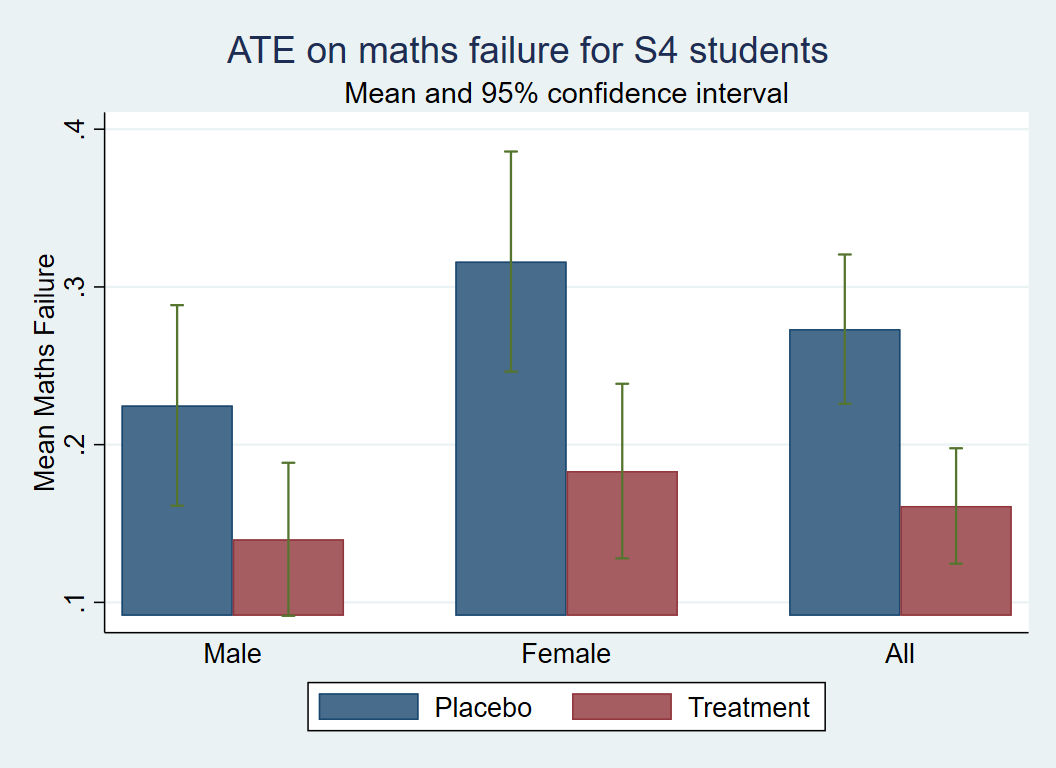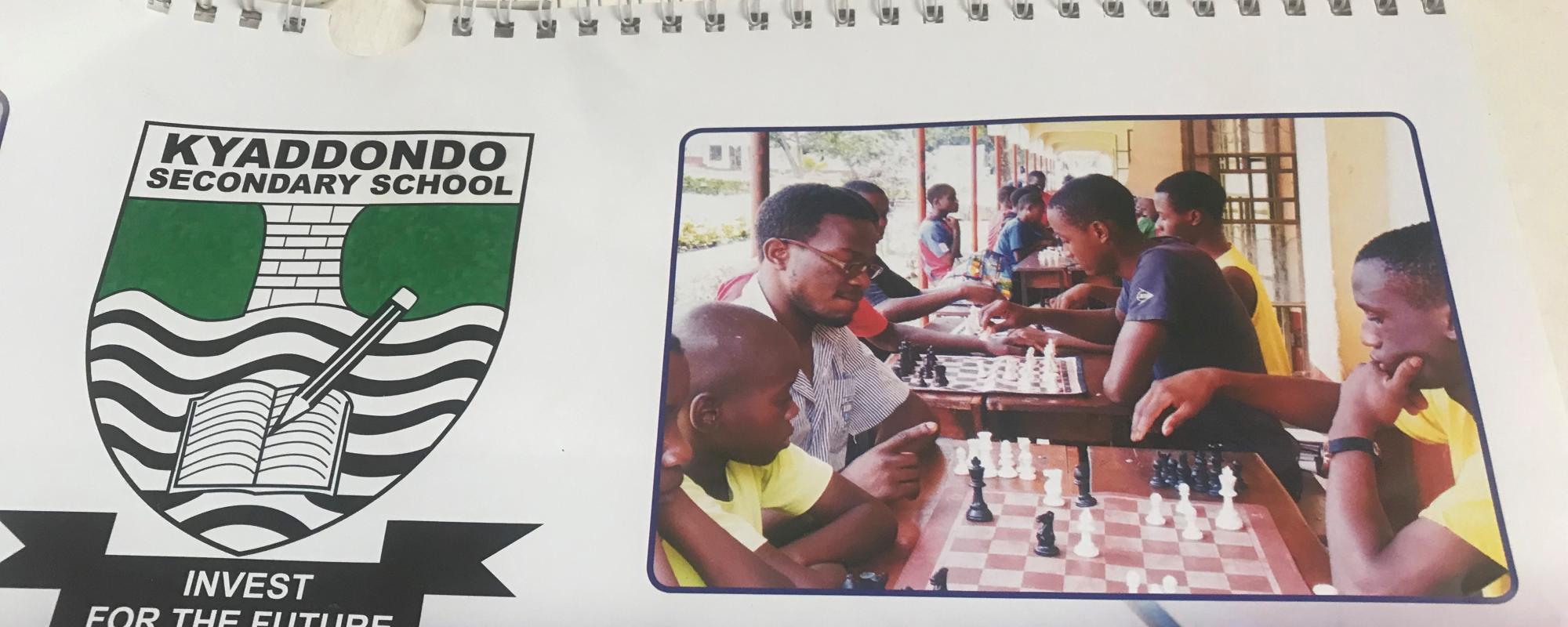Watching Queen of Katwe, a movie featuring an inspiring role model, improved Ugandan secondary school students’ national exam scores and closed gender gaps in attainment.
In developing countries large gender gaps remain in education, with men 25% more likely to finish secondary school than women (UNESCO Institute for Statistics, 2018). Gaps in maths performance between girls and boys are present across both the developed and developing world (OECD, 2015). One potential reason for the persistent gender gaps, particularly in maths, is stereotypes negatively affecting performance and becoming self-fulfilling prophecies (Nosek et al., 2009, Spencer et al.,1999; Steele et al., 2002).
Role models have successfully been used to overcome stereotype threat in a wide range of contexts (Carrell et al., 2010; Breda et al., 2018; Dasgupta and Asgari, 2004; Dennehy and Dasgupta, 2017; Marx and Roman, 2002; Stout et al., 2011; Kofoed and Mcgovney, 2016; Porter and Serra, 2018). Role models can act as a powerful way to change beliefs and raise aspirations (Beaman et al., 2012; Bernard et al., 2014) and might cause people to reassess and raise their goals, ambitions and effort level, breaking them out of a low aspirations induced poverty trap (Dalton et al., 2016; Lybbert and Wydick, 2018).
If an individual lacks role models in their immediate environment, a role model in the form of media can be used to exposure the individual instead (La Ferrara 2016). While several papers have examined changes in behaviours from exposure to role models in TV shows (Banerjee et al., 2018, Chong and la Ferrara 2009, Jensen and Oster 2009, Kearney and Levine 2015, La Ferrara et al., 2012) no one has yet studied the effect of role model exposure through a mass market movie on an important economic outcome – students’ performance in their national exams. I seek to do this through my study of exposure to the movie Queen of Katwe (Riley 2019).
The movie Queen of Katwe is based on the true story of Phiona Mutesi, who goes from poverty living in the slums of Kampala and selling corn to passing drivers, to getting into a top school, playing international-level chess and achieving her dreams. The movie begins with a quote form Ellen Johnson Sirleaf “The size of your dreams must always exceed your current capacity to achieve them". This idea of having bold goals and fighting to achieve them in the face of obstacles is the central theme of the story. Strong academic performance is seen as crucial for achieving other goals and hard-work, rather than innate ability, is the key to success. The protagonist featured here may act as a role model to teenage students in Uganda, particularly female students and students who have done less well academically, for whom she is most similar (Ray, 2006).
In order to examine the impact of seeing Queen of Katwe on academic performance, I randomly assigned 1500 students preparing to take their national exams at the end of lower and upper secondary school to see either Queen of Katwe or a placebo movie at the cinema. I examine impacts on both immediate exam performance 1 week to 1 month after seeing the movie, as well as longer term outcomes related to continuation in education, allowing me to examine both short run and persistent effects of the role model treatment. All the students were from schools in Kampala, selected for proximity to the cinema, and equally split between male and female students, and lower and upper secondary school grades.
The placebo movie, Miss Peregrine’s Home for Peculiar Children, is a children’s adventure story and was chosen to be fun and enjoyable to the age group without having any strong educational content. The use of a placebo movie allows me to exclude any beneficial effects on exam performance that might result just from cinema attendance alone and allowed me to carry out the randomisation at the cinema immediately before showing the movies.
Short term test scores
Students in lower secondary school who watched Queen of Katwe had a 30% decrease (down to 16% from 27%) in the probability of failing a national math exam taken shortly after seeing the movie. When I break down these results by gender, I find that it is female students, and students performing the worst prior to the exam, who benefit most from treatment. Female students go from failing their maths exam 32% of the time to 18% of the time after viewing Queen of Katwe, a 44% decrease in the probability of failing. This closes the gap with their male peers, who fail the maths exam 22% of the time. Effects are largest for female students from the bottom of the ability distribution. These results suggest role models could be a particularly effective intervention for low-ability female students who are likely to suffer most from stereotype threat (Bordalo et al., 2019).

For students in upper secondary school taking their final leaving exams, seeing Queen of Katwe improved their exam scores by 0.13 standard deviations. This is equivalent to going from the 50th to 55th percentile. Again, female students saw the biggest improvements in their test scores, particularly in the compulsory maths paper.
Continuation in education
I find that lower secondary school students who saw Queen of Katwe are more likely to continue in schooling at upper levels. This is particularly true for female students, where treatment closes the 10 percentage points gender gap in continuing in school. Two years after seeing the movies, treated students do as well in the final leaving exam as placebo students, suggesting treatment did not cause less able students to remain in school.
Students in upper secondary school who see the treatment movie are also six percentage points more likely to apply to public university. Again, the effects are driven by female students, who are 15 percentage points more likely apply to university, entirely closing the gender gap in applications with boys. This may indicate that treatment not only improved an exam score but has longer term benefits for students' educational investment.
Role models, through their example, motivate and inspire students to achieve more. While effects on test scores have been found for both physical and media-based role models, a movie may have a greater impact on beliefs than a physical role model through the movie’s ability to ‘transport’ an individual into the plot and cause a deep involvement with the characters (La Ferrara 2016). A movie-based role model also has the advantage of being able to reach a wider audience than a physical person could and at considerably less cost. The intervention described here cost less than $5 per student, and if screenings were done in schools, costs could be even less. Helping schools integrate some form of exposure to a role model into their curriculums is a cost-effective way to improve schooling outcomes.
This study showed that watching a role model in the form of a movie, Queen of Katwe, positively impacted students’ exam performance, particularly of female students, and has positive effects on their continuation in education. However, there are many areas where more research is needed. Questions remain about the mechanism through which treatment had an effect, with previous literature highlighting beliefs about returns to investment (Jensen 2010, Nguyen 2008), aspirations (Beaman et al. 2012, Bernard et al. 2014), and social norms (Banerjee et al 2018, Jensen and Oster 2009) as possible channels. More work is also needed to understand the critical aspects of role models that make them effective at inducing behavioural changes in an audience.
Banerjee, A, E La Ferrara, E and V Orozco (2018), “The entertaining way to behavioural change: Fighting HIV with MTV”.
Beaman, L, E Duflo, R Pande and P Topalova (2012), “Female leadership raises aspirations and educational attainment for girls”, Science, 335(6068), 582–586.
Bernard, T, S Dercon, K Orkin and A Taffesse (2014), “The future in mind: Aspirations and forward-looking behaviour in rural Ethiopia”, CSAE Working Paper Series, 44(April), 48.
Bordalo, P., Coffman, K., Gennaioli, N., and Shleifer, A. (2019). Beliefs about Gender †. American Economic Review, 109(3):739–773.
Breda, T., Grenet, J., Monnet, M., and Effenterre, C. V., (2018). Can female role models reduce the gender gap in science? Evidence from classroom interventions in French high schools.
Carrell, S. E., Page, M. E., and West, J. E. (2010). Sex and science: how professor gender perpetuates the gender gap. Quarterly Journal of Economics.
Chong, A and E Ferrara (2009), “Television and divorce: Evidence from Brazilian Novelas”, Journal of the European Economic Association, 7(2–3), 458–468.
Dalton, P. S., Ghosal, S., and Mani, A. (2016). Poverty and Aspirations Failure. Economic Journal, 126(590):165–188
Dasgupta, N. and Asgari, S. (2004). Seeing is Believing: Exposure to Counterstereotypic Women Leaders and its Effect on the Malleability of Automatic Gender Stereotyping. Journal of Experimental Social Psychology, 40(5):642–658.
Dennehy, T. C. and Dasgupta, N. (2017). Female Peer Mentors Early in College Increase Women’s Positive Academic Experiences and Retention in Engineering. Proceedings of the National Academy of Sciences, 114(23):5964–5969.
Jensen, R and E Oster (2009), “The power of TV: Cable television and women’s status in India”, The Quarterly Journal of Economics, 124(3), 1057–1094.
Jensen, R (2010), “The (perceived) returns to education and the demand for schooling”, The Quarterly Journal of Economics, 125(2), 515–548.
Kearney, M and P Levine (2015), “Media influences on social outcomes: The Impact of MTV’s 16 and pregnant on teen childbearing”, American Economic Review, 105(12), 3597–3632.
Kofoed, M. S. and Mcgovney, E. (2016). The Effect of Same-Gender and Same-Race Role Models on Occupation Choice: Evidence from Randomly Assigned Mentors at West Point.
La Ferrara, E (2016), “Mass media and social change: Can we Use television to fight”, Journal of the European Economic Association, (April).
La Ferrara, E, A Chong and S Duryea (2012), “Soap operas and fertility: Evidence from Brazil”, American Economic Journal: Applied Economics, 4(4), 1–31.
Lybbert, T. J. and Wydick, B. (2018). Poverty, Aspirations, and the Economics of Hope. Economic Development and Cultural Change, 66(January):0–46.
Marx, D. M. and Roman, J. S. (2002). Female Role Models: Protecting Women’s Math Test Performance. Personality and Social Psychology Bulletin, 28(9):1183–1193.
Nguyen, T (2008), “Information, role models and perceived returns to education: Experimental evidence from Madagascar”, MIT Job Market Paper.
Nosek, B. A., Smyth, F. L., Sriram, N., Lindner, N. M., Devos, T., Ayala, A., BarAnan, Y., Bergh, R., Cai, H., Gonsalkorale, K., Kesebir, S., Maliszewski, N., Lix Neto, F., Olli, E., Park, J., Schnabel, K., Shiomura, K., Tulbure, B. T., Wiers, R. W., Nika Somogyi, M., Akrami, N., Ekehammar, B., Vianello, M., Banaji, M. R., and Greenwald, A. G. (2009). National differences in gender-science stereotypes predict national sex differences in science and math achievement. PNAS, 106(26):10593–10597.
Porter, C., & Serra, D. (2019). Gender differences in the choice of major: The importance of female role models. American Economic Journal: Applied Economics.
Ray, D. (2006). Aspirations, Poverty and Economic Change. In Understanding Poverty. Oxford: Oxford University Press., pages 409–421.
Riley, E (2019), “Role models in movies: The impact of Queen of Katwe on students’ educational attainment”, https://emmaalriley.files.wordpress.com/2020/02/role_models_in_movies.pdf
Spencer, S. J., Steele, C. M., and Quinn, D. M. (1999). Stereotype Threat and Women’s Math Performance. Technical report.
Steele, C. M., Spencer, S. J., and Aronson, J. (2002). Contending with group image: The psychology of stereotype and social identity threat. Advances in experimental social psychology, 34:379–440.
Stout, J. G., Dasgupta, N., Hunsinger, M., and McManus, M. A. (2011). STEMing the Tide: Using Ingroup Experts to Inoculate Women’s Self-Concept in Science, Technology, Engineering, and Mathematics (STEM). Journal of personality and social psychology, 100(2):255–270.
